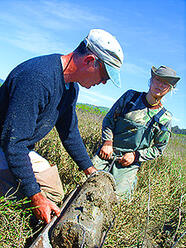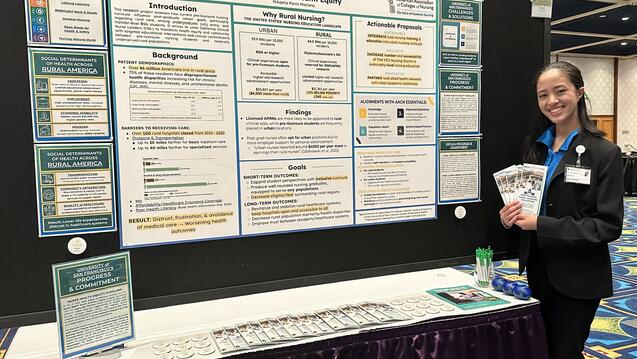
Wetlands v. Greenhouse Gases
With the federal government intent on addressing global warming and California Governor Arnold Schwarzenegger calling for carbon-trading caps, a study underway at the University of San Francisco could turn the tide in the struggle to restore Bay Area wetlands that capture greenhouse gasses from the atmosphere.

The research, led by John Callaway, associate professor of environmental science, is meant to measure how much carbon is captured and stored by tidal wetlands, as well as how rapidly sediment accumulates across wetlands with varying salinities.
The two-year $300,000 study, funded by The Gordon and Betty Moore Foundation – which was established in 2000 to advance environmental conservation and cutting-edge scientific research around the world and improve the quality of life in the San Francisco Bay Area – could change the funding fortunes for 40,000 acres of Bay Area wetlands targeted for restoration in the coming years.
“Reestablishing these huge expanses of wetlands will permanently reshape San Francisco Bay and will play a significant role in improving habitat quality, water quality, and mitigation for sea-level rise,” Callaway said.
Callaway and his research team, including Evyan Borgnis ’08, are extracting soil core samples at a depth of 50 centimeters in salt marshes and 100 centimeters in brackish marshes from seven natural wetland and five restored wetland sites around the Bay Area. A total of 45 core samples will be taken, multiple from each site, which range from Palo Alto in the south to Benicia in the north, as a means to gauge the age, type of sentiment, and the amount of stored carbon.
Undertaken in December 2008, the study is slated to be complete by early 2011.
With so little known about how much carbon is stored in Bay Area wetlands or how quickly sediment accumulates, the build up of which is largely responsible for carbon sequestration, the study’s results will lay the groundwork for establishing the value and cost of restoring wetlands, as well as identify how vulnerable Bay Area wetlands may be to sea-level rise. Data collected from the study will be shared with the California Climate Action Registry (CCAR), a nonprofit that serves as a voluntary greenhouse gas (GHG) registry to protect and promote early actions to reduce GHG emissions.
“This will allow (CCAR) to determine rates of emission reduction credits for restoration activities,” Callaway said. “It is anticipated that this type of ‘carbon trading’ will become more and more important as efforts to reduce greenhouse gas emissions are intensified.”
Accounting for wetlands’ carbon sequestration capacity will not only make it possible to establish accurate carbon credits for restoration activities, but will also provide opportunities for restoration funding as companies and organizations consult the registry in their attempts to obtain carbon credits by funding restoration work.


